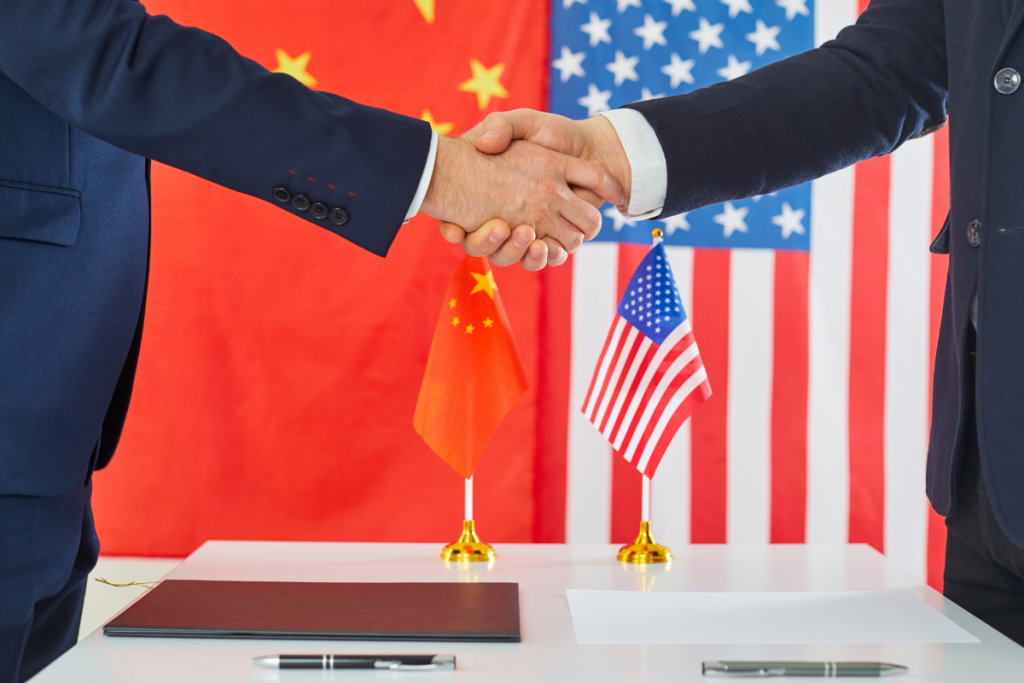After months of economic brinkmanship, the United States and China are edging toward a trade agreement that would formalize steep tariffs while introducing targeted concessions on strategic goods and education policies. The outcome could redefine the balance of trade enforcement and strategic resource access between the two powers.
Shift from Retaliation to Stabilization
President Donald Trump announced on Wednesday that a new U.S.–China tariff agreement is “done,” pending final approval by both national leaders. The deal emerged from high-level talks held in London and builds on a tentative May accord. Under the proposed terms, the U.S. will impose 55% tariffs on Chinese imports—down from earlier punitive levels that had climbed as high as 145% during previous rounds of retaliatory escalation. China, in turn, will maintain a 10% tariff rate on U.S. goods, consistent with the standstill arrangement reached in May during a 90-day pause in hostilities.
While the proposed tariff levels represent a formalization rather than a rollback, the agreement reflects a shift toward managed competition rather than open-ended escalation. U.S. Commerce Secretary Howard Lutnick confirmed on Wednesday in London that a framework had been agreed upon, a statement echoed shortly after by China’s Ministry of Commerce. Implementation, however, remains conditional on approval from both Trump and Chinese President Xi Jinping, with no set timeline disclosed.
Critical Minerals and Education Access
Beyond tariff adjustments, the agreement includes strategic concessions aimed at reducing flashpoints in non-tariff domains. Trump noted that China has agreed to new measures on the export of rare earths and industrial magnets, key components for defense and technology sectors that have become central to U.S. concerns over supply chain security. In exchange, the U.S. has reportedly withdrawn threats to curtail visas for Chinese students, a move that had stirred unease in academic and business circles alike.
These provisions point to an evolving trade diplomacy that increasingly blends economic measures with geopolitical leverage. Rare earth elements have been a persistent point of concern for U.S. manufacturers, who rely heavily on Chinese production for technologies ranging from electric vehicles to semiconductors. Trade reports in recent months have highlighted tightening global access to these resources as countries reassess strategic dependencies.
A Test Case for Managed Rivalry in Global Trade
While the new deal does not resolve the broader tensions underpinning U.S.–China economic relations, it may offer a glimpse into a future where structured deterrence replaces cycles of escalation. Rather than seeking complete tariff elimination, both sides appear to be testing a model of coexistence marked by hard lines on strategic goods and incremental diplomacy elsewhere. If successful, this agreement could shape how future trade deals incorporate national security interests without collapsing under them.




